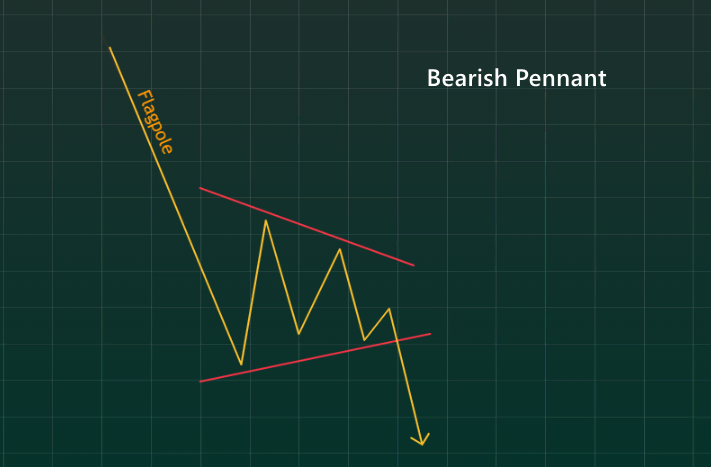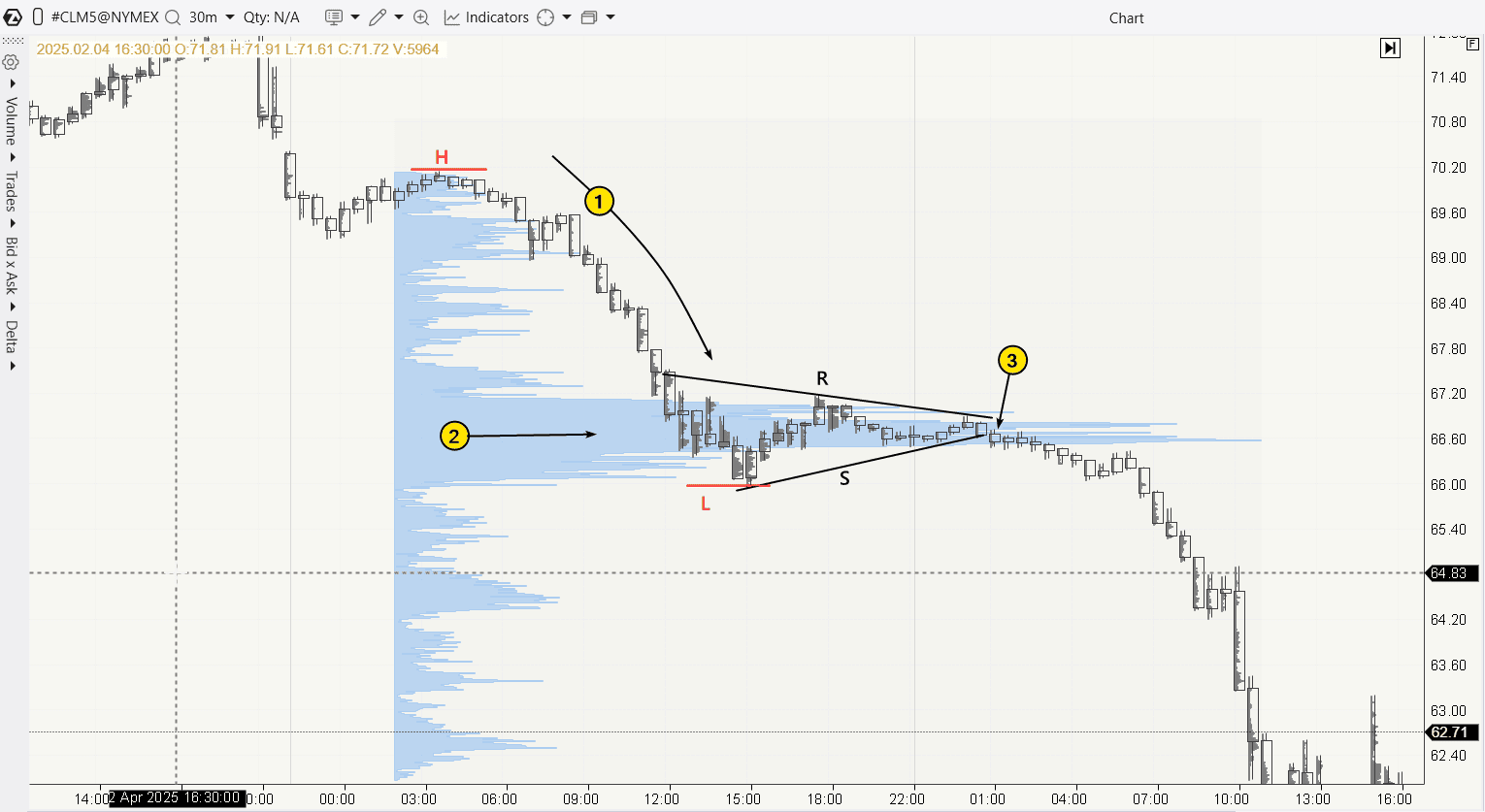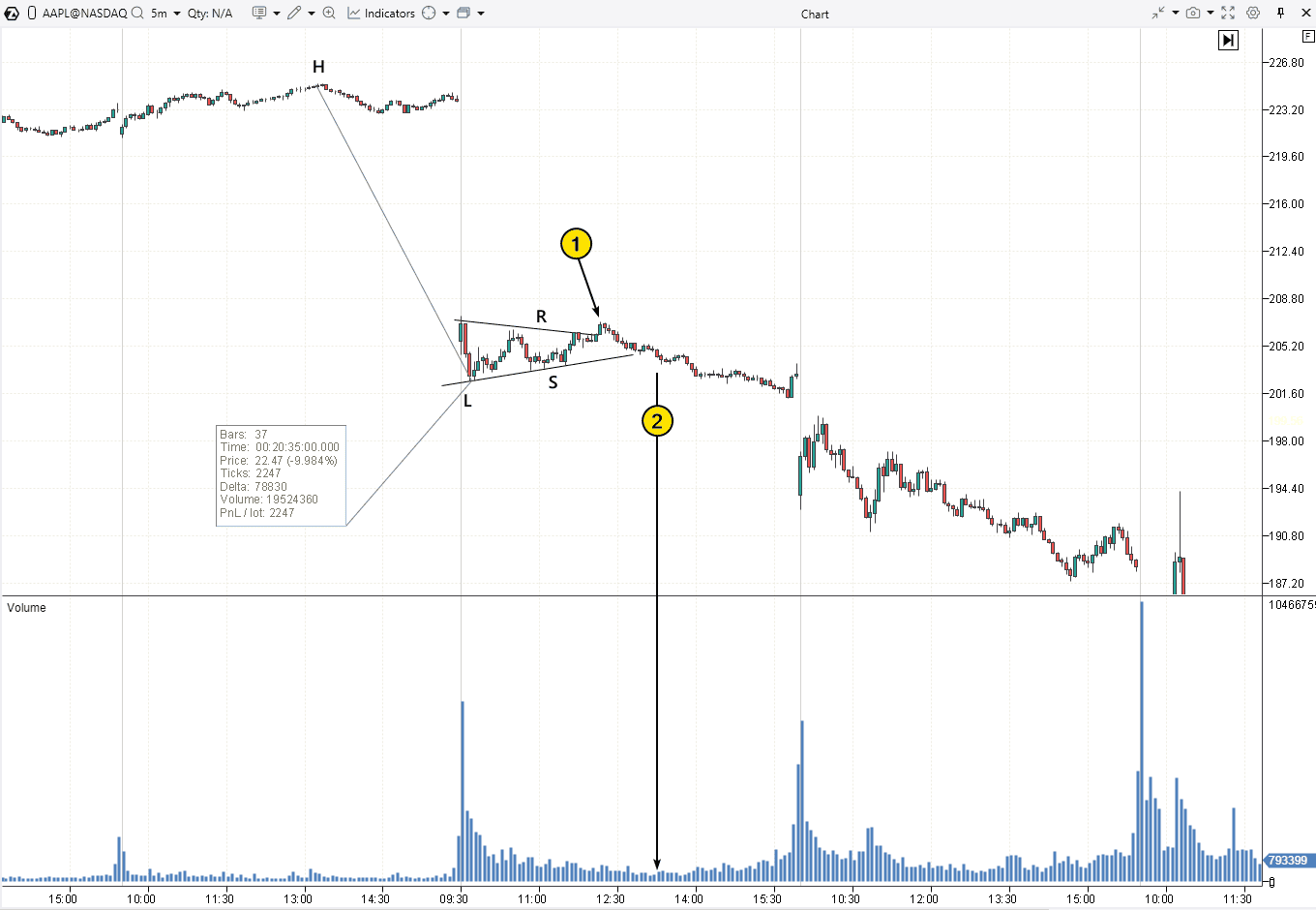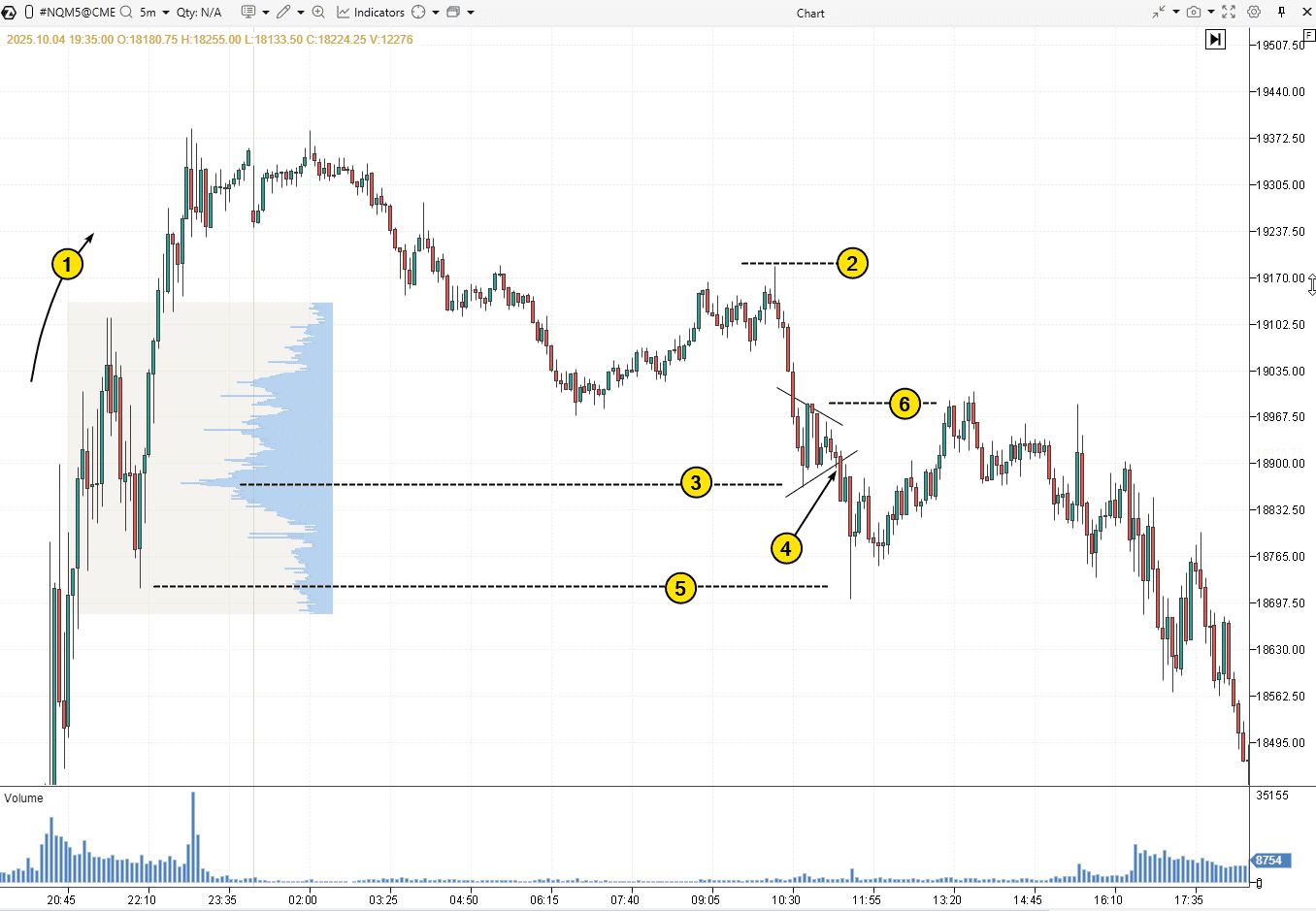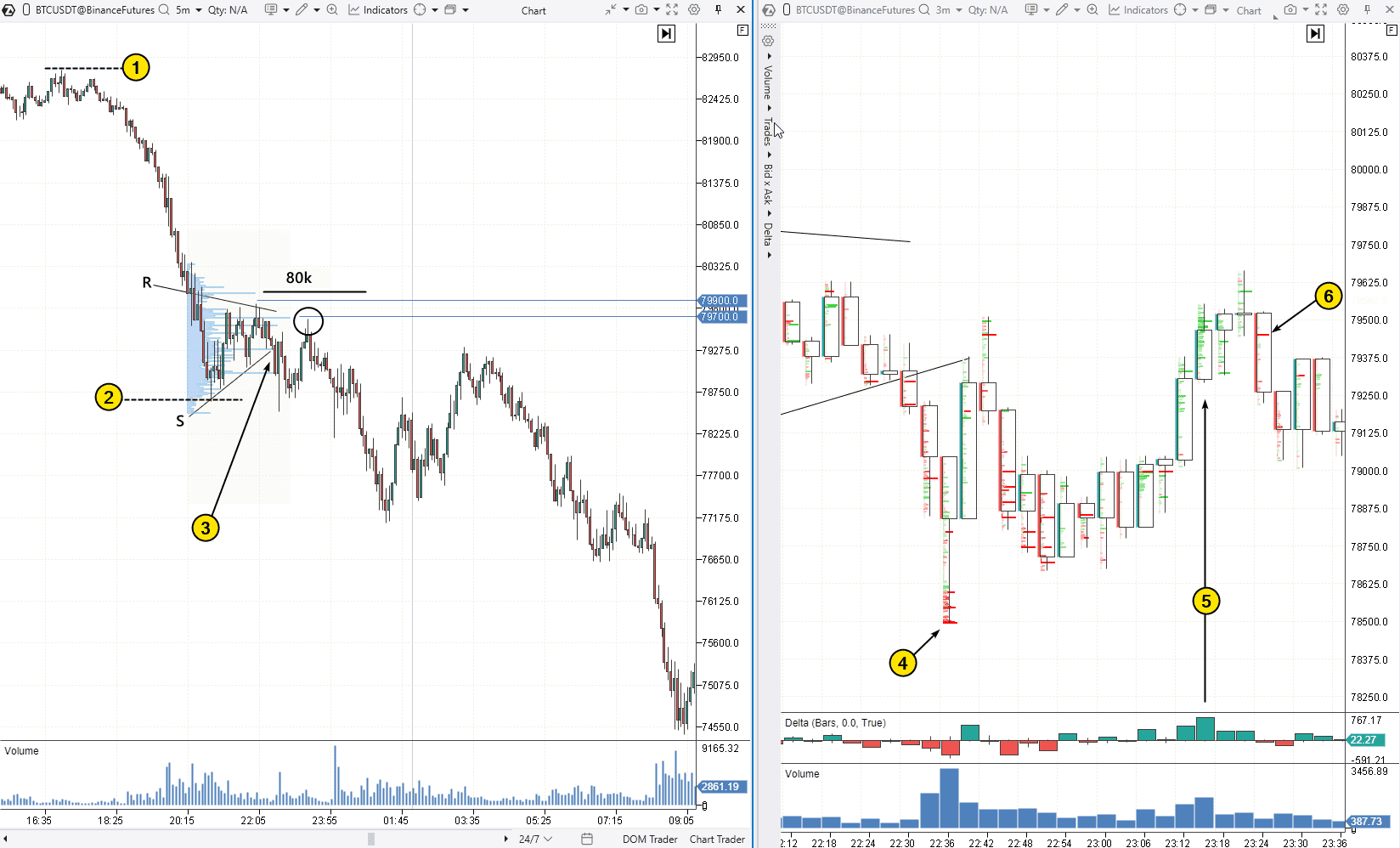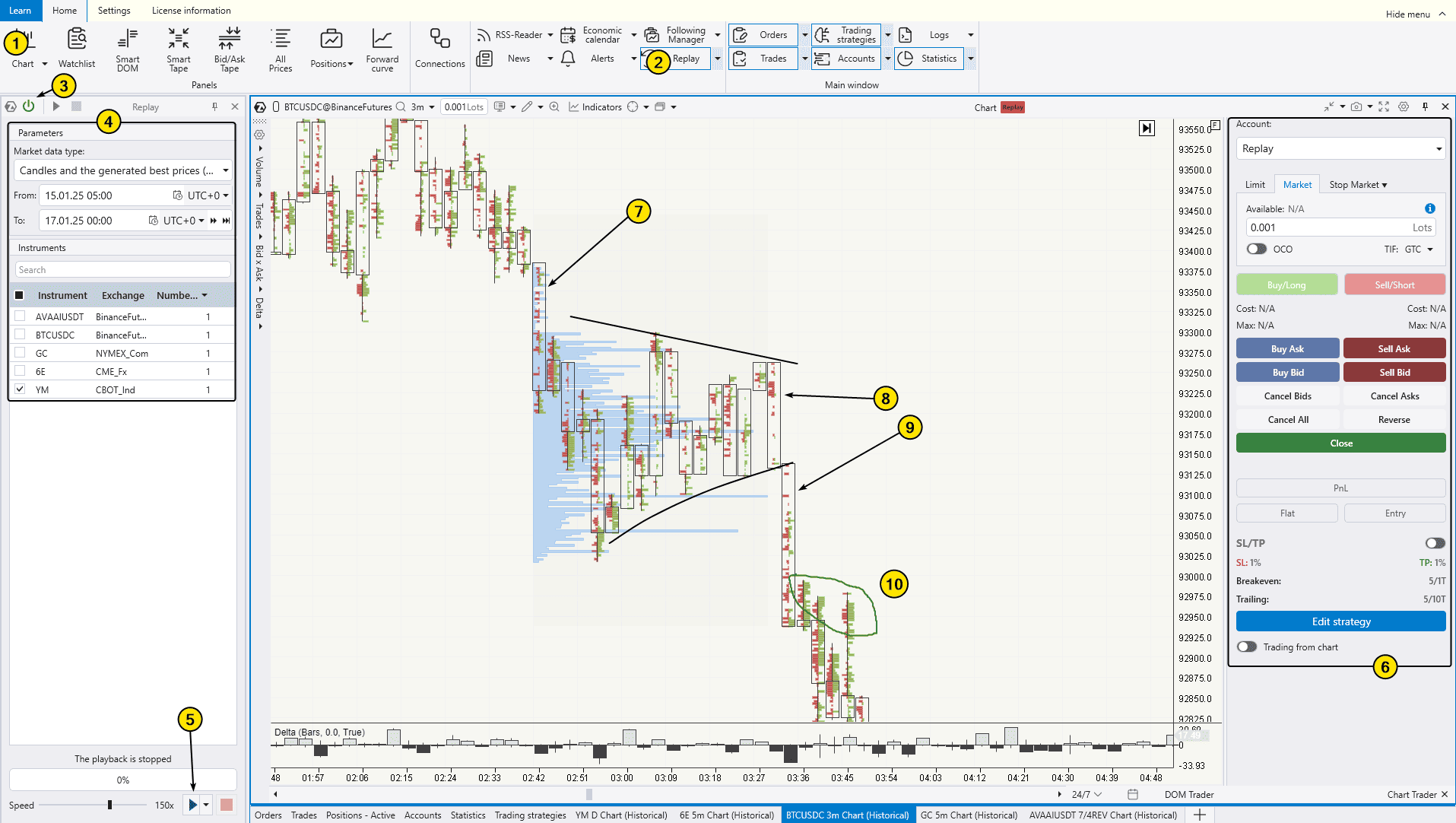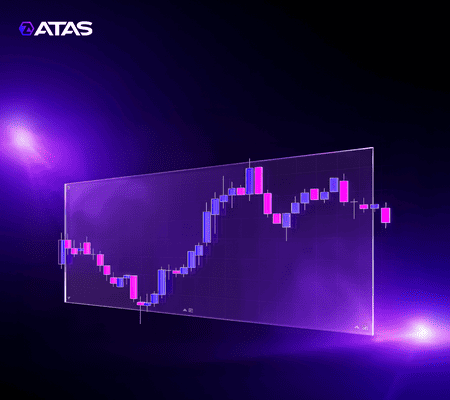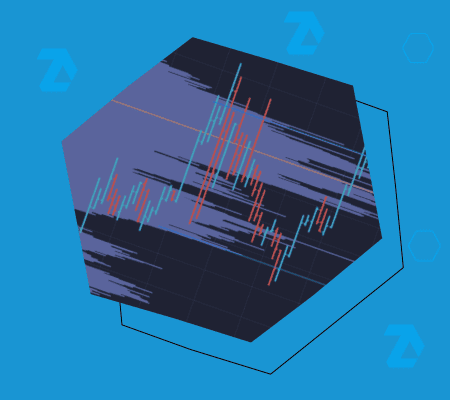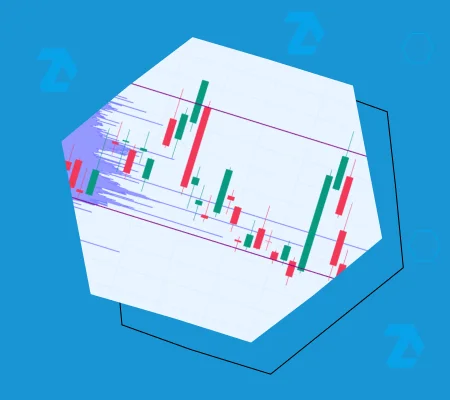When trading a Bearish Pennant, traders expect the downtrend to continue with renewed strength after a temporary period of consolidation.
Step-by-Step Trading Strategy
The classic approach to trading a Bearish Pennant based on technical analysis includes the following strategy:
Step 1. Identify the formation of the pattern. There should be a sharp price decline behind a Bearish Pennant.
Step 2. Wait for a breakdown. It’s important not to miss the moment when the price breaks below the lower boundary of the pattern with increasing speed.
Step 3. Enter a trade. For example, a trigger to sell could be when a candlestick closes below the support line, with confirmation from increased selling volume and a negative delta imbalance.
Step 4. Maintain control until the exit signal. Control can be maintained via stop-loss, take-profit, or manually.
Where to Place a Stop-Loss
When studying resources on trading Bearish Pennants, the following elements are often mentioned on the chart:
- The upper line R.
- The intermediate local high, usually formed just before the support S is broken.
Additionally, market profile levels (such as POC or VAL levels) can be used. This is particularly relevant when you need to minimize risk, for example, if a Bearish Pennant is too wide or the instrument’s lot size is too expensive.
How to determine a target for a take profit
The classic approach assumes that the height of the flagpole should be measured from the point of a bearish breakdown of the lower border of the “bearish pennant” pattern. This allows you to find a benchmark for setting a take profit. In other words, the calculation is based on the assumption that the trend movement after the breakdown will be no less long than the initial movement that formed the flagpole.
Thus, the narrow compressed proportions of the pennant and the long length of the flagpole create a relationship in which the risk is significantly less than the potential reward. However, in real markets, situations may differ.
Let’s look at practical examples on charts for a more realistic understanding of what “bearish pennant” trading looks like, as well as how goals are achieved and risks are controlled.


